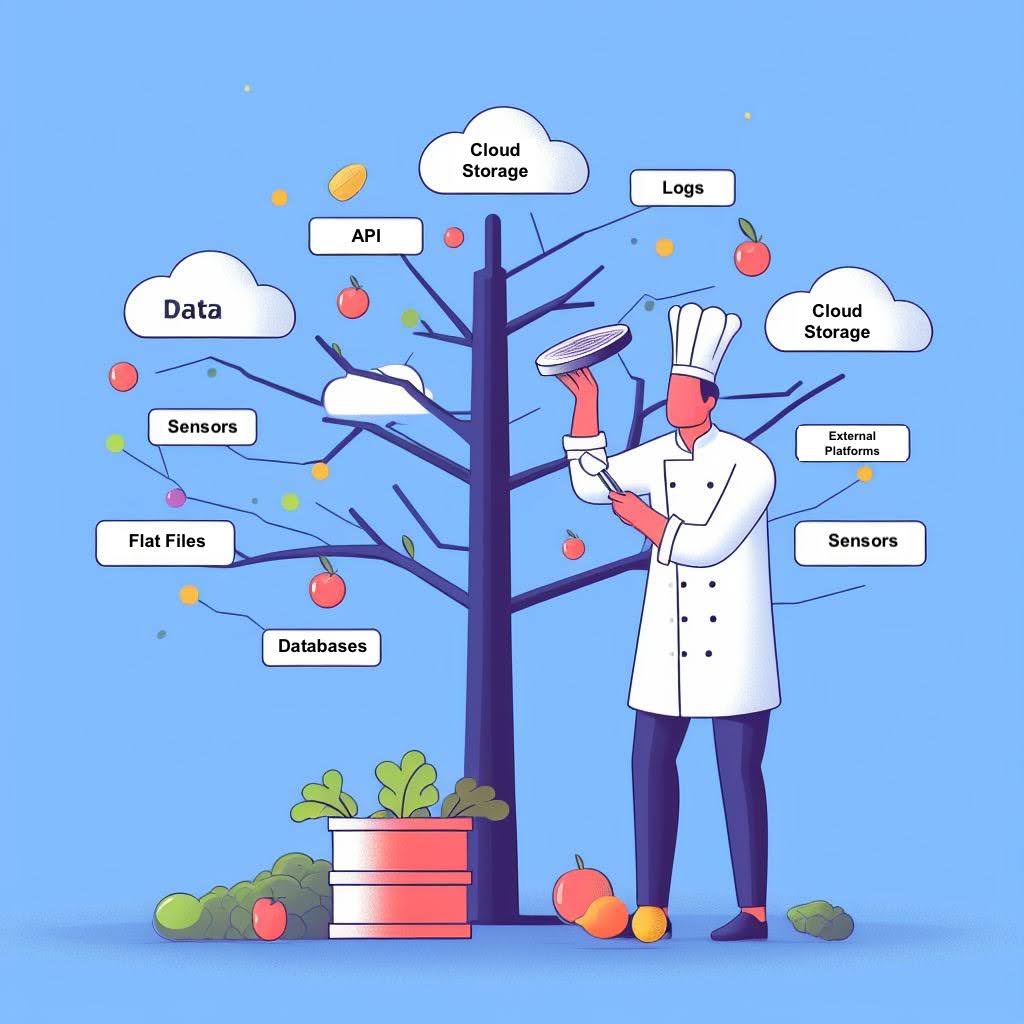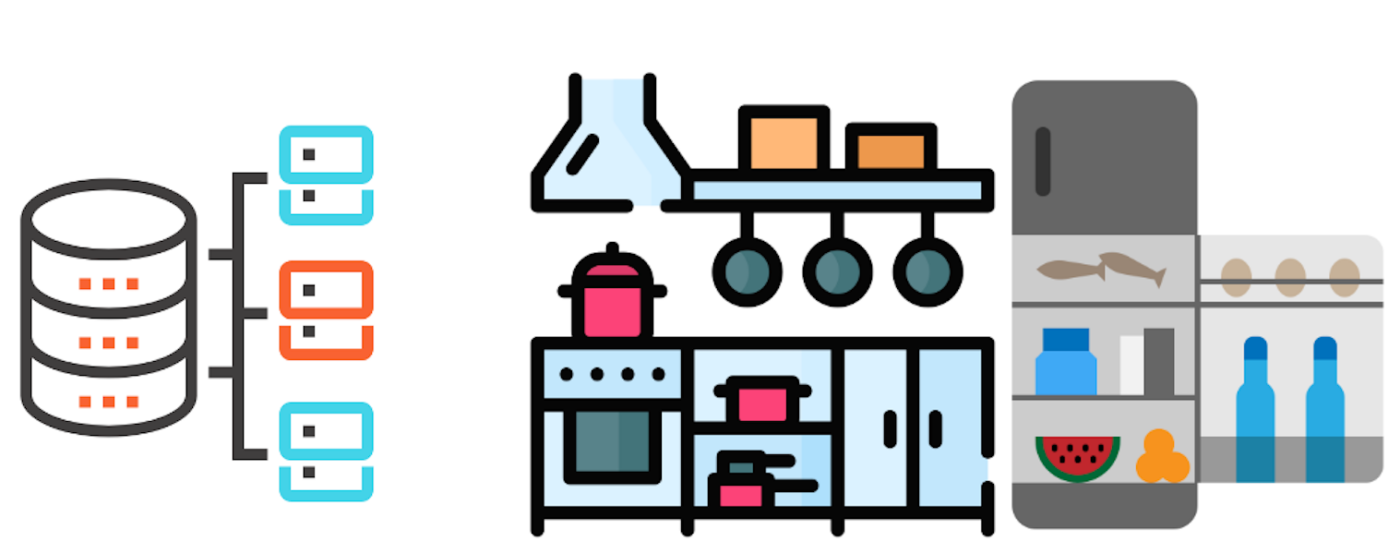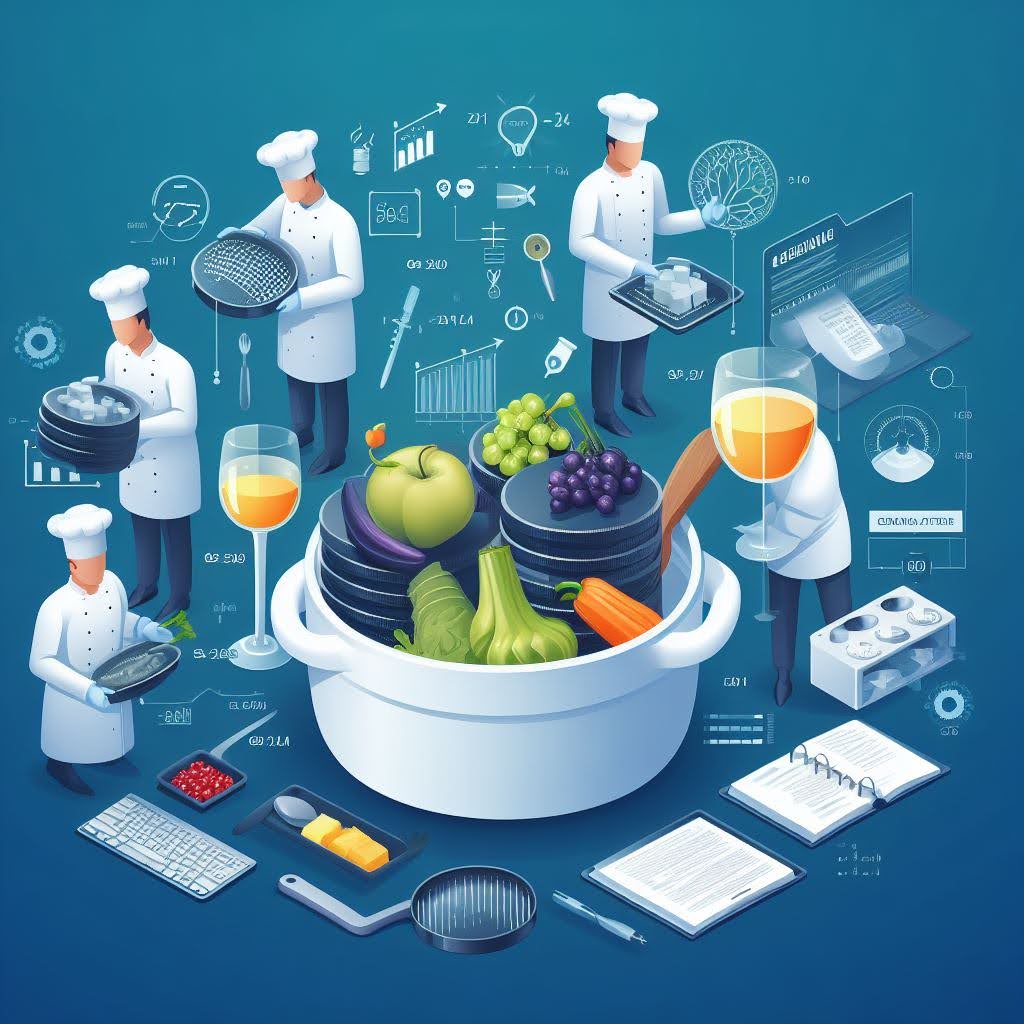The Data Chef’s Secret: Simplifying Data Engineering for All
December 6, 2023
Have you ever found yourself in a tricky situation where friends or family ask you about your job as a data engineer, and it feels like you’re speaking an entirely different language? The world of data engineering is rich, complex, and incredibly technical, making it challenging to tell what we do in a way that non-technical individuals can easily grasp.
But fret not! I’ve been there too, faced with puzzled looks and perplexed expressions when trying to explain my role. That’s why I’ve come up with something special, an analogy that transforms the often mysterious world of data engineering into something far more digestible for the non-techies in our lives.
Think of it as a culinary adventure through the data landscape. We’ll translate key data engineering terms and concepts into relatable culinary analogies. Just as you can enjoy a delicious meal without understanding the intricacies of the chef’s craft, we’re going to explore the art of data engineering without diving into the technical jargon.
So, grab your fork and knife, and get ready to savour the flavours of data engineering, simplified and served up in a way that even your grandma can appreciate. Let’s embark on this journey together and demystify the world of data engineering.
The Role of a Data Engineer
Data engineers are like unseen heroes behind the scenes of the digital age, responsible for making sure that the vast amount of data generated by businesses is collected, stored, and made accessible for analysis. Think of engineers as the culinary architects of the data world. Their primary focus is on building and maintaining the infrastructure that allows organizations to turn raw data into valuable insights. Like a chef with a well-organized kitchen, data engineers have a set of tools and processes to ensure data is available, accessible, and in the right format for data analysts and scientists to work their magic.

Now, let’s take the data engineering key concepts and break them down using the familiar and delicious world of culinary arts. By drawing parallels with cooking, we are going to make data engineering more accessible and relatable. So, picture data engineering as the art of cooking, where data is the key ingredient, and the processes are the recipes to transform it into something extraordinary. Here’s what a data engineer’s job involves:
1. Data Collection – Sourcing Quality Ingredients
A chef starts by selecting the finest and freshest ingredients from various places (farmers, food suppliers). Similarly, a data engineer gathers data from various sources, ensuring it’s accurate and complete. This may involve extracting data from databases, sensors, API, logs, or external platforms. Ensuring data freshness is like scheduling regular repurchasing of ingredients; data engineers schedule jobs to keep their data sources up-to-date and ready for analysis.

2. Data Cleaning – Sorting and Peeling
Just as a chef cleans and peels vegetables, a data engineer cleans and pre-processes the data. This step involves removing any inconsistencies, errors, or missing values from the data, making it ready for analysis.
3. Data Transformation – Chopping and Slicing
Cooking involves various techniques such as chopping, slicing, or boiling to transform raw ingredients into a tasty meal. Similarly, data engineers transform the data to fit the specific needs of data analysts and scientists. This step includes reshaping, aggregating, or converting the data into different formats, just as a chef chops and slices ingredients to match a recipe.
4. Data Integration – Mixing Flavors
Often, data comes from various sources, and data engineers blend it together. This is similar to a chef mixing different ingredients to create a harmonious dish. Data integration ensures all data works smoothly together.
5. Data Storage – Ingredient Storage
Chefs organize ingredients on shelves, in cabinets, or in the refrigerator to make them easily accessible when needed. Data engineers organize datasets in data lakes, databases, or data warehouses, creating a structured environment where data can be efficiently retrieved and used, much like a chef reaching for specific ingredients during cooking.

6. Data Pipeline – Cooking Assembly Line
Data engineers establish data pipelines, which are like the kitchen assembly line for data processing. The assembly line passes through a set of steps connected in series or in parallel. You have the initial preparation station, where ingredients are cleaned and prepared, much like the data extraction and transformation phase in a data pipeline. As the ingredients move down the assembly line, they undergo different processes such as cooking pasta, making sauce and preparing meatballs, just like data in a pipeline is processed, enriched, and aggregated at each step. These pipelines automate the movement and processing of data.

7. Data Quality Assurance – Taste Testing
Like a chef who tastes their dish to ensure it’s perfect, data engineers monitor and maintain data quality to catch any issues before they reach data analysts or scientists.
8. Monitoring and Maintenance – Quality Control
Just as a restaurant needs to consistently maintain food quality and service, data engineers monitor and maintain the data infrastructure. They ensure that data remains accurate and accessible over time, similar to maintaining the quality of a culinary establishment.
9. Infrastructure – Kitchen Layout
The kitchen in a restaurant is the physical space where all the cooking and food preparation happens. It’s equipped with various appliances, utensils, and tools that chefs use to create their dishes. A well-organized kitchen layout optimizes efficiency and productivity. In the data engineering context, the infrastructure can be compared to the physical or virtual hardware and servers where data processing and storage occur. This infrastructure includes servers, storage devices, networking equipment, and data centers.
10. Cloud Services – Kitchen Appliances
In a kitchen, appliances like ovens, mixers, and blenders are essential for various cooking tasks. Similarly, cloud services in data engineering act as digital appliances, providing a range of functionalities like processing power, storage, networking and analytical capabilities. Data engineers rent these services to efficiently process and analyze data, just as chefs opt to rent space, kitchens, or appliances instead of owning and managing them. In data engineering, the cloud refers to cloud computing platforms like AWS, Azure, or Google Cloud, where companies can rent and use virtual infrastructure and services to store, process, and analyze their data.
11. Benefits of the Cloud – Benefits of Catering
Just as restaurants often choose catering services for the flexibility, cost-efficiency, and scalability they provide, businesses choose cloud services for similar reasons. The cloud allows data engineers to access and manage resources on demand, without the need to invest in and maintain their own physical infrastructure. This makes it easier to scale resources up or down as needed, similar to how a restaurant might scale catering services for a large event.
12. Cost and Resource Management – Kitchen Maintenance
Maintaining a kitchen involves costs like rent, utilities, equipment maintenance, and staffing. Similarly, in the world of data engineering, maintaining physical infrastructure can be expensive. The cloud provides cost optimization and resource management capabilities, enabling companies to pay only for the resources they use and reducing the overhead costs associated with infrastructure maintenance.
13. Scalability – Catering Capacity
Just as a restaurant can quickly scale catering services to meet the demands of a large event, cloud services offer scalability. Data engineers can easily expand their computational and storage capacity in the cloud to handle increased workloads or data processing requirements.
Over to the data analysts and scientists
Once the data has been collected, cleaned, transformed, integrated, stored, and passed through the data pipeline, it’s ready for the data analysts and scientists to work their magic. They can use this well-prepared data to derive valuable insights (this dish needs more salt), generate reports and visualizations (this dish is our most popular), and build predictive models (create new tasty recipes). This is similar to a chef that uses well-prepared ingredients to create a delicious meal.
Data engineering is the essential first step in the data analysis and science process. Just as a chef’s meticulous preparation of ingredients is vital to creating a delightful dish, a data engineer’s work is crucial for data analysts and scientists to extract meaningful insights from raw data. So, the next time you taste a delicious meal, remember that behind every great data analysis or scientific discovery, there’s a data engineer diligently preparing the ingredients for success.
If you’re still eager to learn more about this topic, stay tuned for our upcoming blog series where we will delve into the intricate details of each term discussed in this blog.
Pictures are generated by an AI system (DALL.E)

